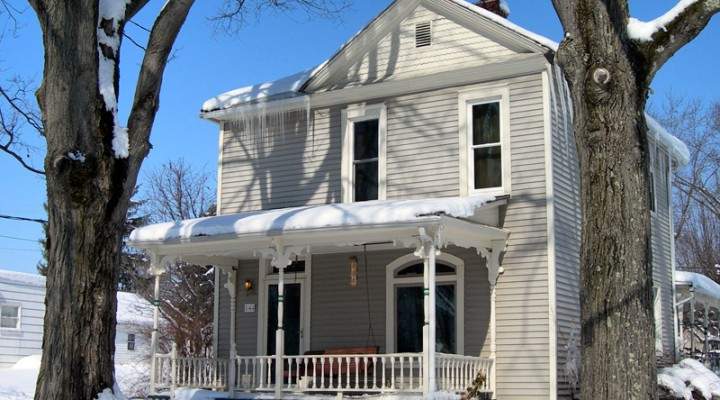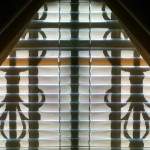Choose a colour scheme to suit the architectural style of your house.
Deciding how to paint the outside takes as much time and planning as selecting an interior palette.
Indoors, there are only a few different surfaces to consider, but outside might feature anything from brick to rendered masonry, corrugated iron, various forms of weatherboard and cladding, and timber products.
Most homes feature a combination of these surfaces and figuring out the right paint to use on each one can leave you feeling daunted.
This is where modern paint technology can help. There is now a specially formulated paint for every type of wall, and the most advanced are suitable for more than one surface.
Like interior paints, exterior formulations are available in either water-based acrylic or oil-based enamel formulas and three lustres, matt or flat, semi-gloss and gloss.
In the past, exterior paint was more expensive but these days it’s roughly the same price as interior products.
The difference between the two is the inclusion of UV protection, moisture barriers and stronger pigments to prevent colours fading.
Selecting colours
Take your time before settling on a palette for the exterior of your home. Get it right and your house will stand out without overpowering, get it wrong and you’ll cringe every time you approach the front door.
Shaynna Blaze, host of Selling Houses Australia and Taubmans brand ambassador and creative director, knows the challenges. She says that a basic understanding of colour is the place to start.
As a general rule, light colours make a building look larger and are often favoured for traditional classical architecture. Strong, dark colours can be striking but may also overwhelm architecture and fade more quickly.
Too many colours will look too busy, while too few can make the end result seem flat and uninteresting.
Three complementary colours and one contrasting shade is a good formula to work with.
“Most people go for a neutral tone on the walls, but to create a focal point and give your home a strong presence, add a little bold colour to one area of the exterior, such as on your front door. One of my favourite combinations is using Taubmans Endure Poinciana Red to contrast against neutrals and whites”, – says Shaynna.
Exterior paints can be colour tinted to suit your tastes so spend a little time testing out different combinations to be sure you’re getting exactly what you want.
Architectural details
Other things to take into account before deciding on the colour scheme are the period and architectural style of the house.
“A traditional house will have individual features such as trims and rooflines”, – says Shaynna, – “So sometimes it’s best to keep the palette simple and use colour to accentuate one key feature. A more modern building may have strong lines and striking features that allow you to create a dramatic colour scheme to match. Contrast in your walls and trims will highlight angles that you want to be the focus of your exterior.”
It’s also a good tip to take some of your cues and ideas from the surroundings of your home.
“Use your garden, driveway, guttering and landscape as inspiration for your colour palette, to create subtle contrasts and an overall sense of harmony for your property. Fences help frame the view of your house, and using a similar paint colour to the exterior trims creates a sense of connection between the house and the garden”, – she says, – “Also, I recommend using a dark charcoal colour to paint concrete paths or driveways. This creates depth, as dark colours recede.”
Getting ready
Just like any surface, exteriors must be properly prepared before painting.
Target peeling, flaking and bubbled paint patches and gently scrape and sand back with 180 grit abrasive paper.
Walls need to be clean, free of dust and debris, and completely dry.
The best quality paint and the most professional technique will not yield lasting results if the surface is not well prepared.
With their improved technology, water-based acrylic paints such as Dulux Weathershield or Taubmans Endure are excellent DIY options that work well on most surfaces.
Paint chalking
As paint wears, you might notice a fine white powder on the surface. Chalking is part of the normal ageing process, but it will need to be cleaned away before repainting.
Go over the surface with a stiff bristle brush or wire brush on masonry, then rinse with a garden hose or pressure washer.
When the surface is dry, check for any chalking. If it is still visible, apply a suitable primer, or sealer for masonry, then repaint.
If little or no chalk remains and the old paint is sound, no priming is necessary and the surface can be repainted with a good-quality exterior paint.
Dealing with lead
Paints containing as much as 50% lead were used on the inside and outside of houses until 1965, when the legal level was reduced to 1%.
In 1992, the legal lead level was reduced again to 0.25%, before being further lowered to just 0.1% in 1997.
In old, unrenovated houses, lead-based paint is most likely to be found on window frames, doors, skirting boards, exterior walls, gutters, metal surfaces and areas covered in enamel paint.
Pink and red primer were also manufactured using lead.
Houses built after 1965 might still contain lead-based paint, particularly if old or industrial paint has been used. The paint is only dangerous if the surface is flaking or damaged.
A lead-testing kit from hardware stores measures concentrations.
If lead is found to be present, special care must be taken to remove it, as it can be dangerous.
If in doubt, call in a professional.




















